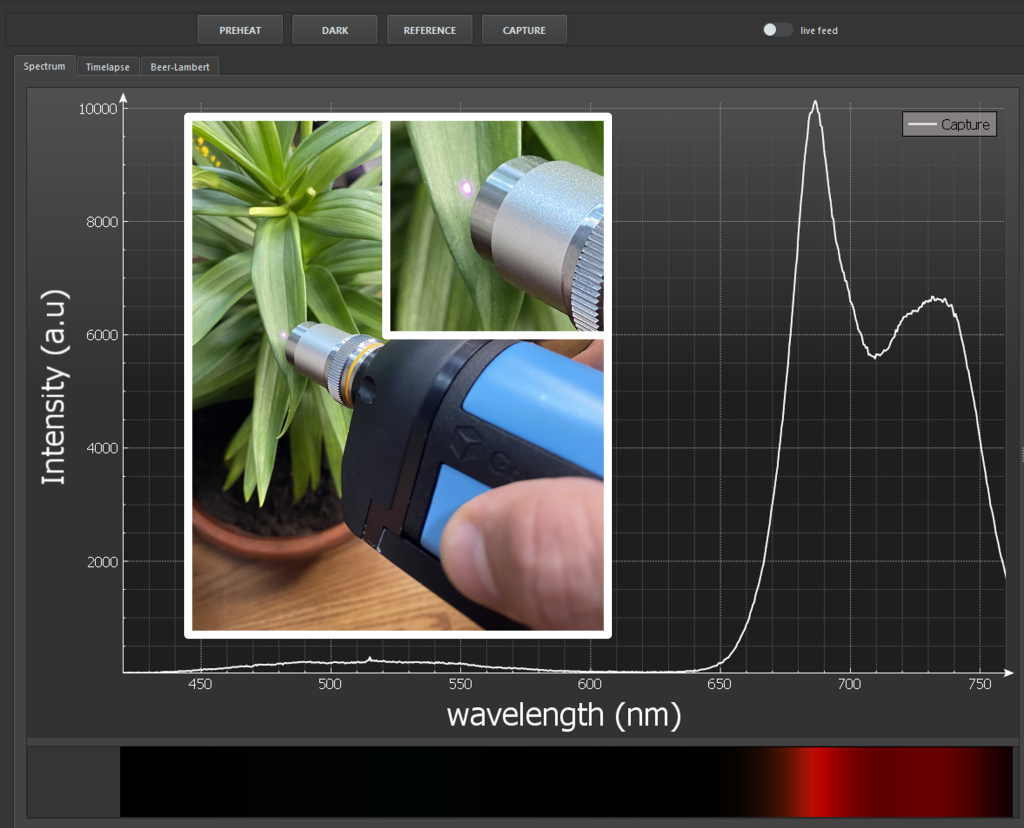Portable Spectroscopy for Non-Destructive In-Vivo Measurements on Plants
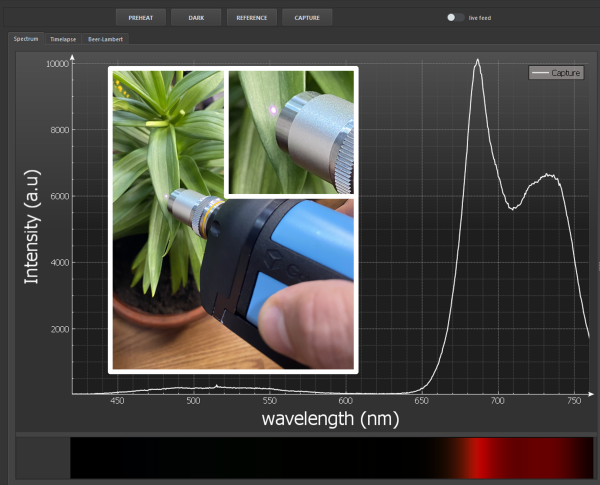
The assessment of the authenticity, purity, and overall quality of chemicals, food products, and other goods can reliably be done in laboratories equipped with instrumentation for chemical analysis. However, the value provided by instrumentation that is portable, compact, and easy to use is unmatched when quick and reliable answers are needed, saving time, money, and effort. In this portable spectroscopy blog post, we show how in-vivo non-destructive measurements of chlorophyll can be performed using a handheld spectrometer equipped with a laser-induced fluorescence module.
Portable Spectroscopy Fluorescence Measurements of Chlorophyll
Chlorophyll content can be measured in plants using a variety of methodologies that involve chemical assays following solvent extraction of chlorophyll from processed leaves, or non-destructive absorption techniques that are limited to leaves of limited thickness and shapes. Chlorophylls absorb strongly in the blue region of the electromagnetic spectrum and emit a characteristic fluorescence in the red, which makes them suitable for detection and measurement using laser-induced fluorescence.
These portable spectroscopy example measurements were performed on white lily leaves of the same plant that showed a range of chlorophyll content as observed in different green tonalities and even yellow leaves and spots. Fluorescence measurements were directly obtained on the live plant by approaching a handheld IndiGo fluorescence spectrometer equipped with a laser source at 405 nm, and using a spectrometer exposure time of 100 ms.

Laser-induced chlorophyll fluorescence can be obtained from green leaves, in-vivo, and the resulting fluorescence shows two characteristic emission maxima at approximately 690 nm and 730 nm (Lichtenthaler et al.). The figure on the right shows a laser-induced fluorescence spectrum of chlorophyll obtained in a visibly healthy green leave, where the two fluorescence maxima at ~690 nm and ~730 nm are clearly observed.
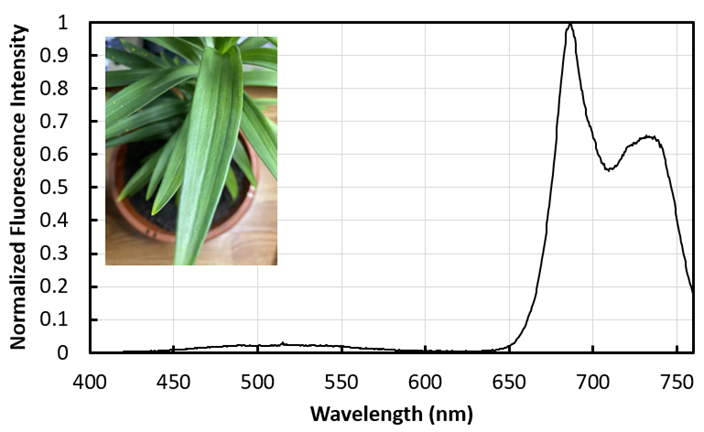
Depending on the overall plant health, and thus the chlorophyll content, the relative intensity of the two fluorescence peaks will change. Specifically, the ratio of chlorophyll fluorescence at 690nm/735nm can be used to monitor variations in the content of chlorophyll in live plants. This metric has been shown to correlate with the amount of chlorophyll that can be indicative of overall plant health (Maharramov et al., Lichtenthaler et al.). Since these laser-induced fluorescence measurements can be performed on live plants, it is possible to monitor their health in their habitat without using time-consuming and destructive methodologies.
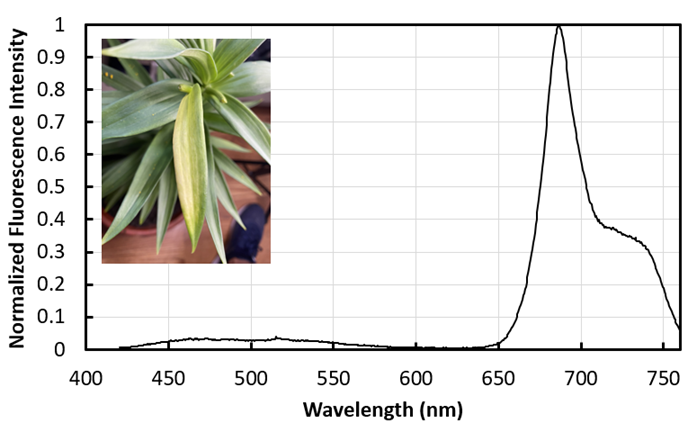
The overall intensity of chlorophyll fluorescence decreases in unhealthy plants, as seen in the visibly damaged leaves in the figure on the right. Furthermore, the appearance of noticeable emission around 530 nm has been associated with phenolic compounds that increase in the presence of disease. (Saleem et al.)
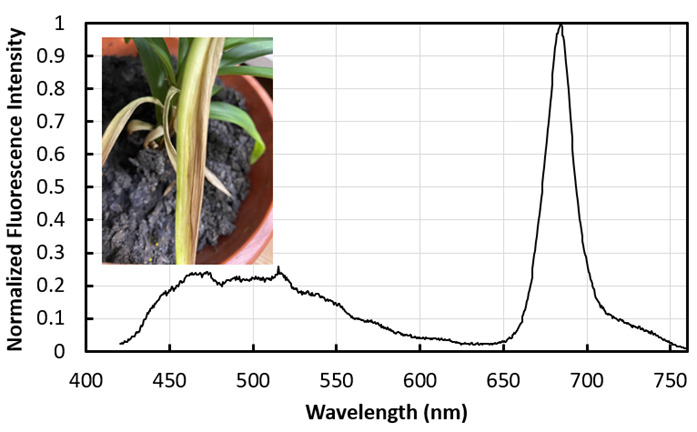
As seen in this example, the small but powerful IndiGo handheld spectrometer from GoyaLab can easily become an all-in-one portable fluorescence spectrometer when coupled to the laser fluorescence module. For more information on this and other portable spectroscopy solutions, visit our spectroscopy product page and our spectroscopy application page.

